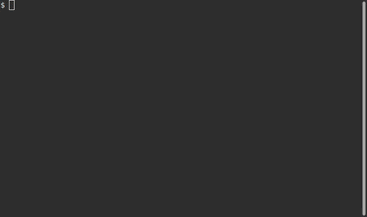

Google’s secretive Fuchsia OS is open for contributions
source link: https://arstechnica.com/gadgets/2020/12/googles-secretive-fuchsia-os-is-open-for-contributions/
Go to the source link to view the article. You can view the picture content, updated content and better typesetting reading experience. If the link is broken, please click the button below to view the snapshot at that time.
Is 2021 the year of Fuchsia? (Probably not) —
Google’s secretive Fuchsia OS is open for contributions
Fuchsia has been in development for four years now.
Ron Amadeo - 12/10/2020, 3:37 AM
-
Here's what Fuchsia looked like in 2018. This is the home screen in phone mode.
-
The home screen in laptop mode.
-
Pressing the center Fuchsia button opens up a quick-settings panel. The only control here that actually works is "logout."
-
At the bottom is a "Google" search bar, which doesn't search Google. It shows fake suggestions and returns local results like apps.
-
Type in a URL and Fuchsia will attempt to render a webpage. It's bad at it.
-
Here's a results screen in laptop mode.
-
Recent apps appear at the top of the screen.
-
Recent apps in phone mode.
-
Scrolling up will minimize the other UI elements.
-
You can drag thumbnails together for split-screen modes.
-
Here's side by side.
-
Split-screen mode in action.
-
Tap on the time to change the time zone.
-
This totally nonfunctional app mockup shows a phone app.
-
This is just a picture of a website.
-
A picture of Google calendar.
-
Time for some stuff that actually works! This file manager will actually give you a list of apps, which we tried running.
-
These blocks will scroll by forever.
-
A video app! It doesn't work.
-
Whatever this is looks terrible. The left side doesn't do anything. The right side will scroll, and tapping on the video will launch a black video screen.
-
A spinning cube.
-
A very broken music app.
-
This is "dashboard," some kind of testing app.
-
This is "Capybara," which is (was?) supposed to be a desktop-centric user shell.
-
It can launch white option screens like this and not much else.
Google's super secret, experimental in-development operating system, Fuchsia, is still alive. Google recently put out a blog post titled "Expanding Fuchsia's open source model" announcing that the company is now accepting public contributions and bug fixes for whatever this OS ends up being. There is now a public mailing list, a public bug tracker, and even a roadmap.
Google says it has "been developing Fuchsia in the open, in our git repository for the last four years." That's not quite how I would describe the development process. After we compiled Fuchsia and got it running on a Pixelbook, the Fuchsia team scrubbed the repo of the user interface. I would guess Fuchsia has a similar setup to Android, with a public-facing repository full of the bits Google is willing to disclose, and a private repo where all the interesting stuff happens. Either that or Google has done zero interface work in the last two years, and Fuchsia development is slower than anyone was expecting—I don't see any user interface code in the repo. There is a public bug tracker, but many of the bugs are labeled "Restrict-View-Google" and are not visible to non-employees.
The blog post includes what might be the first official picture of Fuchsia: a thrilling gif of a command line running a "Hello World" app:

Hearing Google describe Fuchsia is always interesting since the company doesn't talk about it much, and there is speculation that Fuchsia is an eventual replacement for Android and Chrome OS. The post doesn't do much to dissuade this line of thinking, calling Fuchsia "a long-term project to create a general-purpose, open source operating system." Google continues, "We are laying this foundation from the kernel up to make it easier to create long-lasting, secure products and experiences." "From the kernel up" is a reference to Google building the kernel themselves. Rather than basing the OS on Linux, Fuchsia is building a kernel from scratch called "Zircon." Google says: "Fuchsia is designed to prioritize security, updatability, and performance, and is currently under active development by the Fuchsia team." That "updatability" mention feels like a shot at Android, which is not updatable at all, thanks to OEMs' ability to change Android and fragment the codebase across devices.
Advertisement
Google does seem like it's bringing Fuchsia and Android closer together. It's possible to get Fuchsia running in the Android Emulator. Google is also working on Android app support for Fuchsia, via a port of the Android Runtime (ART). The new roadmap paints a picture of an OS that is still in the "exploratory" phase. The Fuchsia team is "actively exploring" how various parts of Fuchsia talk to each other, spinning up a "version 2" of several core components and "evaluating potential improvements" for the file system.
Google took five years to develop Android, and back then the company started with Linux and was in a rush to produce some kind of answer to the iPhone. Today, Google has roughly 85 percent of the smartphone market share, so there's no reason to rush. Fuchsia is building its own kernel, which is way more complicated than starting from Linux. If we give Fuchsia development at least as long as Android, we would see something substantial from the OS in 2021. Coincidentally, 2021 is also when Bloomberg claims Fuchsia will first hit the market, via simpler products at first, like a smart speaker. The same report says the plan to replace Android is pegged sometime before 2023.
Listing image by Ron Amadeo
Recommend
About Joyk
Aggregate valuable and interesting links.
Joyk means Joy of geeK